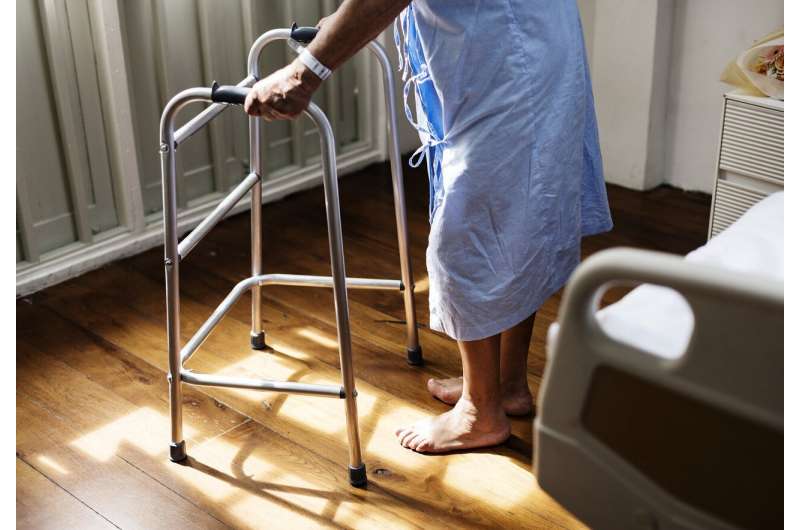This article has been reviewed according to Science X's editorial process and policies. Editors have highlighted the following attributes while ensuring the content's credibility:
fact-checked
peer-reviewed publication
trusted source
proofread
Study: Global patient harms rise from 11 million to 18 million over 30 years

The proportion of patient harms associated with medical procedures, treatment, and contact with health care systems rose by 59%, from 11 million to 18 million globally, between 1990 and 2019, finds a data analysis published online in the journal BMJ Quality & Safety.
They outpaced the world's population increase of 45% over the same period. And older people bore the brunt of these incidents, with the steepest rise among 65–69-year-olds, the findings show.
In developed nations, over 50% of inpatient harms are deemed preventable, rising to 83% in developing nations, note the researchers. These harms undermine health and the quality of life, are costly, and erode public trust, while squandering valuable resources, the team adds.
But current estimates of the adverse effects of medical treatment rely heavily on medical record reviews and voluntary reporting systems. And the lack of a systematic, consistent global approach makes it difficult to accurately quantify the numbers and inform health policy priorities, say the researchers.
In a bid to address this, they drew on data from the Global Burden of Disease (GBD) study for 204 countries for the period 1990-2019. The GBD includes information from a range of sources, including surveillance systems, government records, health facility reports, and surveys.
The researchers looked at the overall and age-standardized number of new incidents globally and nationally. They then looked at time trends, stratified by age and sex and the Sociodemographic Index (SDI), a composite of income, education, and fertility rate of individual countries that represents their social and economic development.
Between 1990 and 2019, the global population increased by 45%. But over the same period, reported cases of patient harm arising from medical treatment rose faster—by 59% from around 11 million to 18 million.
The overall incidence rate was 232.5 per 100,000 of the global population in 2019, representing a 10% increase since 1990. And the age standardized incidence rate was just over 233/100,000, representing an increase of 4.5%.
Regionally, the overall incidence rate for all age groups in the high SDI region increased from 515/100,000 in 1990 to almost 823/100,000 in 2019, representing an increase of 60%. And the age standardized incidence rate rose from 502 to 648/100,000, an increase of 29%.
France was the only country in the high SDI region to buck this trend for all age groups, with the steepest decline in cases among 50–70-year-olds, possibly because of a string of patient safety policies and measures implemented nationwide, suggest the researchers.
The sharpest fall in overall incidence rate was observed in low SDI regions, falling by 14% from 155 to 141/100,000; the age-standardized incidence rate in these regions fell by around 10% from 147 to 139/100,000.
Globally, the incidence remained largely unchanged across age bands up to the 45–49 year old age bracket. But incidence rates increased among 50–94-year-olds, with the steepest increase among 65–69-year-olds, at around 2% a year.
Cases among those aged under 1, 1–4, 5–9, and 10–24 fell. But in 2019, cases among those aged 0–4 still accounted for over 17.5% of all cases.
Between 1990 and 2019, all five SDI regions closely matched the global trends, with decreasing proportions of cases among the under 24s and increases among the over 50s.
There are several possible reasons for the disparate trends between high and low SDI regions, suggest the researchers. These include the extent of health care provision, which is higher in wealthier and more developed countries. For example, the incidence of patient harm in the U.S. was about 50 times higher at all ages than it was in Indonesia.
Higher incidence in the high SDI region may also reflect better monitoring systems and greater and more equitable population access to health care, not just poor quality or overtreatment, the team suggests. And people are more likely to live longer in wealthier countries.
As to the higher rates of patient harms among older people, the researchers suggest that drugs are likely to explain most of these as a result of age-related physiological factors affecting drug metabolism and clearance, polypharmacy, co-existing health conditions, and declines in cognitive and functional capacity reducing medication adherence.
"This confluence of factors renders appropriate medication management exponentially more challenging in advanced-age populations with complex comorbidities," they write.
The researchers acknowledge various limitations to their findings, including that many lower SDI countries lacked reliable original data, for which predictive estimates had to be substituted. And the GBD study only evaluated the overall numbers of patient harms without any analysis of the types or severity of incident.
But the researchers conclude, "As population age and medical services expand with socio-economic development, addressing [adverse effects of medical treatment] incidents becomes a universal imperative to safeguard patient well-being and ensure equitable access to quality health care."
More information: Global, regional and national time trends in incidence of adverse effects of medical treatment, 1990–2019: an age–period–cohort analysis from the Global Burden of Disease 2019 study, BMJ Quality & Safety (2024). DOI: 10.1136/bmjqs-2023-016971


















